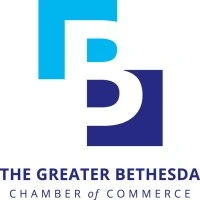
Using the 7 Emergency Measures for Cash Flow Challenges
According to Forbes, 70% of businesses fail because they can’t manage their cash flow well? In simple terms, cash flow issues occur when you’re spending more money than you’re actually making. So, if you find yourself in this tricky situation, you might struggle to cover payroll or other day-to-day business costs.
When business leaders lack a well-defined strategy or plan to address a cash flow shortfall, it can lead to a cash flow crisis. When faced with such a crisis, it’s crucial to be prepared to take immediate action to rescue your business from potential financial ruin.
Enhance Cash Flow and Avert Shortfalls through Managerial Accounting
1. Revise Your Business Strategy to Enhance Profitability
When faced with a shortage, it’s essential to thoroughly analyze your business plan, operations, processes, and expenditure. Your objective should be to understand the reasons behind the cash flow shortage, assess its likelihood of recurring, and develop a strategy to manage future shortages.
Utilize job costing to scrutinize your company’s profit and loss statements, and dissect profit margins within distinct categories such as projects, clients, staff, events, marketing tactics, products, and services. This analysis will help you identify the most and least profitable aspects of your business. Consequently, you can refine your business plan by emphasizing high-profit services, considering discontinuation of clients that may be causing unforeseen financial strain, optimizing pricing structures, and identifying areas of waste or unnecessary expenses to streamline your operations.
2. Speed Up Your Receivables - Receipt of Funds
Follow Tesla’s cash flow management strategy and expedite your receivables to promptly address the 7 emergency measures for cash flow challenges. The faster money enters your business, the quicker you can resolve cash flow issues. While Tesla achieved this by accepting pre-orders before production, you can employ various tactics to accelerate your receivables:
- Offer Convenient Payment Options: Enhance convenience for clients by providing multiple payment methods, including credit cards and mobile or electronic payments.
- Prioritize Past-Due Accounts: Review your accounts receivable for overdue clients and initiate phone calls. In a cash flow crisis, even partial payments can make a significant difference.
- Request Up-Front Payments: Instead of invoicing the full amount after delivering services or products, ask new customers for a deposit or partial payment in advance.
- Send Timely Invoices: Optimize your receivables management by issuing invoices immediately upon delivering products or services, rather than batching them for a specific date. The sooner the invoice is sent, the faster you’ll receive payment.
- Increase Invoice Frequency: Rather than waiting for job completion to invoice, generate invoices weekly or bi-weekly to bill for services provided up to that point.
3. Discuss Payment Terms with Suppliers
During a financial crunch, limiting your outgoing cash can ease the pressure on your working capital. Openly communicate with your suppliers to explore options for adjusting or deferring payment schedules. While some may be inflexible, there’s a good chance that suppliers you’ve had a long-term relationship with will be accommodating. You may also find that utility companies are willing to offer some flexibility or even reduced rates to help you through the tough times.
4. Evaluate Financing Alternatives
When your company faces a cash flow crunch, meaning more funds are leaving the business than coming in, one solution is to infuse additional capital. Options for this include securing a business loan or utilizing a credit card cash advance. However, before committing to any form of debt, make sure you’re well-informed about the interest rates and have explored all other avenues. Avoid taking a step that merely postpones the issue rather than resolving it.
If the cash flow crisis stems from a fundamental issue within the business, borrowing money will only serve as a temporary fix and could exacerbate the problem down the line.
5. Secure Funding from Investors
One quick method for boosting your company’s working capital, which could also result in acquiring a new business partner, is through equity sales. Like accumulating debt, make certain you are comfortable with relinquishing some level of ownership in your business as a solution for a cash flow issue. Exercise caution in selecting investors and establishing partnerships. Don’t allow the urgency of a financial shortfall to compel you into making unwise choices that could affect your business’s long-term health.
6. Cut Costs Rigorously
While it’s generally good practice to carefully monitor every expenditure, this becomes crucial when your business is experiencing a cash flow shortfall. During such periods, it’s essential to prioritize your company’s outgoings. Weed out all non-essential expenses and focus your spending solely on operations that are vital for sustaining the business and driving revenue.
7. Liquidate Surplus Assets
Alongside trimming non-critical expenditures, consider selling off any non-essential assets your business owns during a cash flow crisis. While this is a one-time solution—since you can only sell an asset once—it serves as a quick and efficient way to generate immediate funds when you’re facing financial difficulties.
Two Essential Guidelines to Consistently Maintain Improved Cash Flow in Your Business
1. Prepare – Be Ready
To effectively navigate a cash flow crisis, it’s crucial to have a well-thought-out plan and current financial documents, including income statements, balance sheets, and cash flow statements.
Regularly update your financial records to ensure you’re always aware of your company’s financial health.
Read More: How to improve Your Cash Flow During Periods of Inflation
2. Prevent – Be Proactive
The adage, “Prevention is better than cure,” holds true for financial planning just as it does for healthcare.
To actively stave off cash flow issues, employ tactics like cash flow forecasting, tracking key performance indicators, utilizing managerial accounting, and optimizing your business operations.
Read More: Budgeting vs. Forecasting for Your Business
Managerial accounting concentrates on leveraging your
company’s financial data to predict, improve cash flow and ultimately prevent
cash flow challenges. By closely monitoring and improving key performance
indicators like days sales outstanding and profit margins, you can proactively
avoid cash flow crises.
As specialists in corporate financial management, SecureCFO
helps it’s clients improve their cash flow management through the
deployment of intelligent bookkeeping and managerial accounting systems. These
are designed to enable business owners and CEOs to make informed, strategic
decisions rather than reactive ones.
By optimizing your administrative operations, you can refine
your business model, boost cash flow, and increase profitability, moving your
business from a precarious financial position to a more stable and elevated
status.




